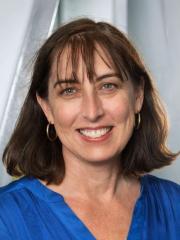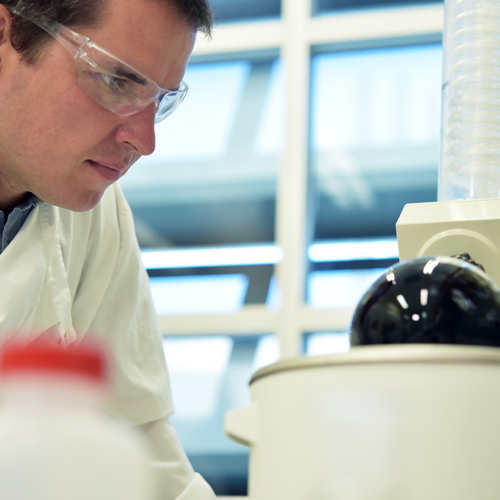Dr Amanda Wraith Kijas

Interrogating the synergy of biophysical and biochemical modulators of biological responses, with a focus on unmet medical needs in wound healing
Dr Amanda Wraith Kijas is a passionate research scientist working at the interface between material science and biological responses. With a focus on understanding the biophysical modulation of biological responses that synergistically function with the well-known biochemical cues, for application to unmet medical needs. Projects range from engineering new biomaterials, to dissecting biophysical modulators underlying biological responses, to more translational projects such as tissue regeneration and the development of venom driven bleeding control products.
Currently a senior Research Fellow in Professor Alan Rowan's Group at the Australian Institute for Bioengineering and Nanotechnology based at The University of Queensland, Brisbane Australia.
Previous postdoctoral positions at the University of Queensland Centre for Clinical Research Brisbane, Australia; QIMR Berghofer Medical Research Institute, Brisbane, Australia; Cornell University, NY, USA. Doctoral Degree in Medical Science (Ph.D.), Department of Neurobiology, Uppsala University, Sweden. Honours Degree of Bachelor of Biotechnology (B.biotech.), School of Biological Sciences, Flinders University, Adelaide, Australia.
View research group
View research group
Industry
• Herston Biofabrication Institute, Metro North Health: Advancing knowledge and technology in 3D scanning, 3D modelling and 3D printing of medical devices, bone, cartilage and human tissue. Brisbane, Australia.
• Aegros: Patients first through innovation with a safe, secure, sustainable supply of therapeutic plasma products. Sydney, Australia.
Collaborations
• Dr Jason Brown, Dr Peter Gilles, Dr Abbas Shafiee, Dr Andrew Dalley, Herston Biofabrication Institute, Metro North Health, Australia
• Professor Mark Midwinter, Faculty of Medicine, The University of Queensland
• Assoc Professor Mark Fear and Professor Fiona Wood, University of Western and Fiona Wood Foundation, Australia
• Professor David Hume and Dr Kate Irvine, Translational Research Institute • Emeritus Professor Martin Lavin, University of Queensland Centre for Clinical Research, Australia
• Assoc Professor Jessica Mar, Australian Institute for Bioengineering and Nanotechnology, Australia
Funding
- US Department of Defense, Congressionally Directed Medical Research Program, DM171113 (2018-2021) and follow on funding DM210096 (2022-2025) to interrogate the efficacy and safety of a novel haemostatic product to stem uncontrolled bleeding.
- Royal Brisbane Hospital Foundation Research Grant (2022-2023) to undertake pre-clinical evaluation of a venom based haemostatic agent.
Key Publications
R Yegappan, J Lauko, Z Wang, MF Lavin, AW Kijas* and AE Rowan* (2022) Snake Venom Hydrogels as a Rapid Hemostatic Agent for Uncontrolled Bleeding. Advanced Healthcare Materials. 11:2200574.
Kijas AW, Lim YC, Bolderson E, Cerosaletti K, Gatei M, Jakob B, Tobias F, Taucher-Scholz G, Gueven N, Oakley G, Concannon P, Wolvetang E, Khanna KK, Wiesmüller L and Lavin MF. (2015). ATM-dependent phosphorylation of MRE11 controls extent of resection during homology directed repair by signalling through Exonuclease 1. Nucleic Acids Res 43(17):8352-67.
Kozlov SV, Graham ME, Jakob B, Tobias F, Kijas AW, Tanuji M, Chen P, Robinson PJ, Taucher-Scholz G, Suzuki K, So S, Chen D, Lavin MF. (2011). Autophosphorylation and ATM activation: additional sites add to the complexity.
J Biol Chem. 286(11): 9107-19. Kijas AW, Harris JL, Harris JM, Lavin MF. (2006). Aprataxin forms a discrete branch in the HIT (histidine triad) superfamily of proteins with both DNA/RNA binding and nucleotide hydrolase activities.
J Biol Chem. 281(20):13939-48. Kijas AW, Studamire B and Alani E. (2003). Msh2 separation of function mutations confer defects in the initiation steps of mismatch repair. J Mol Biol. 331(1): 123-138.
Kijas AW, Lavin MF. (2017) Assaying for Radioresistant DNA Synthesis, the Hallmark Feature of the Intra-S-Phase Checkpoint Using a DNA Fiber Technique. Methods Mol Biol. 1599:13-23.
Kijas AW, Lim YC, Bolderson E, Cerosaletti K, Gatei M, Jakob B, Tobias F, Taucher-Scholz G, Gueven N, Oakley G, Concannon P, Wolvetang E, Khanna KK, Wiesmüller L and Lavin MF. (2015). ATM-dependent phosphorylation of MRE11 controls extent of resection during homology directed repair by signalling through Exonuclease 1. Nucleic Acids Res 43(17):8352-67.
Kozlov SV, Graham ME, Jakob B, Tobias F, Kijas AW, Tanuji M, Chen P, Robinson PJ, Taucher-Scholz G, Suzuki K, So S, Chen D, Lavin MF. (2011). Autophosphorylation and ATM activation: additional sites add to the complexity. J Biol Chem. 286(11): 9107-19.
Kijas AW, Harris JL, Harris JM, Lavin MF. (2006). Aprataxin forms a discrete branch in the HIT (histidine triad) superfamily of proteins with both DNA/RNA binding and nucleotide hydrolase activities. J Biol Chem. 281(20):13939-48.
Kijas A.W., Studamire B., Alani E. (2003). Msh2 separation of function mutations confer defects in the initiation steps of mismatch repair. J Mol Biol. 331(1): 123-138.
| Featured projects | Duration |
|---|---|
| Wound Management: bioactivation of hydrogel to promote wound healing | 2017–2025 |

